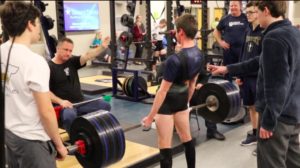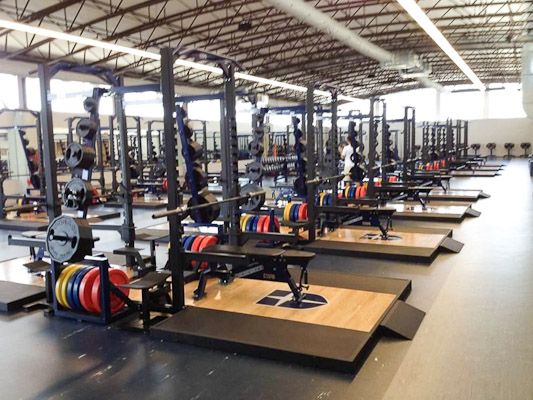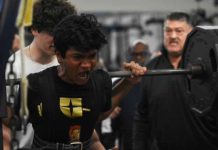“Strength is the ability to exert force against an external resistance. We build strength through the process of stress, recovery, and adaptation.” – Coach Lacey
What is Powerlifting?
Powerlifting is a sport that is frequently misunderstood. A lot of people think that powerlifters are 200 pound reckless maniacs who go screaming around the gym and break their backs lifting, when in reality, powerlifting requires great discipline and “immaculate form,” as Coach Weeks would say. Also, you don’t have to be 200+ pounds to be a powerlifter, as there are 10 weight classes ranging from 114 to 275+, so there’s an opportunity for everyone to participate.
Powerlifters compete in the big three lifts: Squat, Bench, and Deadlift. In competitions, lifters are permitted 3 separate attempts for each lift, and once they finish, the total amount of pounds lifted are added up so that they can be compared with other lifters in their weight class. While going for these flashy 1 rep maxes during competition season can feel pretty satisfying and rewarding, it takes a tremendous amount of work to get to that place.

How do powerlifters build strength?
Powerlifters start off the year by dialing down technique. The goal is ultimately to perfect your technique with light weights before you start lifting heavy. These first couple of weeks are aimed towards breaking any bad habits in your lifts, such as failing to squat below parallel, not fully extending your arms during a bench press, and rounding your back when deadlifting. Not only does good form prevent injury, but it also prepares lifters for competition season when technique is judged.

Once the lifts have been mastered, the lifters are put through strenuous volume workouts that build great strength. One of the most brutal parts of the pre-season is that lifters are expected to add 5 pounds to each lift every practice. While this may not sound like much, once you start to peak at your strength, 5 pounds can be the difference from getting through a set with ease to burning out halfway through.
Lifting is only half the battle, as powerlifters must additionally consume a surplus of calories and protein if they are to reap any benefits from their hard work in the gym. Junior Ryan Fleming added that “sleep is essential for success in this sport. Coach Lacey always stresses that 8 hours is a necessity if we are to make gains.” This portion of the season continues until the second-semester starts, and while it may seem like a grind, it is exceptionally rewarding to see the results of your hard-work once competition begins.

What does the future of Jesuit Powerlifting look like?
Over normal summers, lifters are usually able to maintain their strength by going to the gym, however, this summer was not exactly normal. With a lack of access to gyms for over five months, preserving strength was a great challenge, as push-ups and weightless squats are only going to get you so far.
On top of this, there has been uncertainty as to whether or not there will even be competitions, which lessens the incentive to train hard during the first semester. As if all of that wasn’t enough, practices have been limited due to the cohort splits. It used to be Monday, Wednesday, and Friday from 4-5, but now lifters can only practice whenever they have an on-campus day.
Despite these limitations, I am still confident that the Jesuit Powerlifting team will make the most of the situation. With effort and consistency, we can build ourselves back to where we were once before. Senior Colin Kittleson believes that “our season will go well. The team plans to work hard during the off-season, and hopefully, we will have a competition season to showcase the results of our hard work.” While there are no true guarantees, the only thing we can really do is add 5 pounds each practice.
Stay tuned to The Roundup for more Jesuit Powerlifting updates!






